The Khwarizmi Science Society Fascinates Young Minds at the Ali Institute
By Dr Saadat Anwar Siddiqi and Kumail Abbas
Khwarizmi Science Society
Lahore
The Khwarizmi Science Society (KSS) is Pakistan’s most active grassroots organization that makes consistent strivings for the promotion of a science culture in the country. It participated in a large science exhibition at the Ali Institute of Education on 16 April 2013. The exhibition-cum-competition was arranged by Ali Institute of Education, Lahore, especially for the secondary and post-secondary level students who presented innovative models covering various disciplines of science like physics, chemistry, biology and space science.
The KSS, in keeping with its 17-year tradition, found this as an immense opportunity for imbuing the scientific spirit in the minds of children.
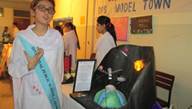 In the exhibition, experiments and models on a vast area of subjects including biology (animal cells, functions of a kidney), physics (telecommunication, series and parallel circuits, solar system, windmill), chemistry (distillation), harnessing energy from muscles, tidal energy and renewable energy sources, and environmental change etc. were presented by students from class 6 to class 10. Practical demonstrations on wind mill and hydel power generation especially highlighted the need for cheap energy resources and the youngsters' keen appreciation of the pressing energy problems.
In the exhibition, experiments and models on a vast area of subjects including biology (animal cells, functions of a kidney), physics (telecommunication, series and parallel circuits, solar system, windmill), chemistry (distillation), harnessing energy from muscles, tidal energy and renewable energy sources, and environmental change etc. were presented by students from class 6 to class 10. Practical demonstrations on wind mill and hydel power generation especially highlighted the need for cheap energy resources and the youngsters' keen appreciation of the pressing energy problems.
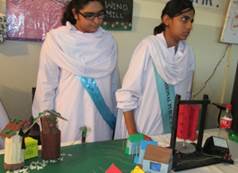
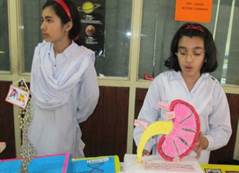
The organizers from the Ali Institute dedicated a separate room for the KSS team. Six stalls of demonstrative experiments were arranged on myriad topics including earthquakes and seismometry, weather and atmosphere, light emitted from gases, as well as astronomy including demonstrations on lunar craters and lunar phases. The KSS team consisted of seven members including five volunteers: Ahmed Zubairi, Kumail Abbas, Maham Masood, Ali Hasan, Muhammad Yusuf and Arifa Mirza. The exhibition started after the keynote address by the Director of the Ali Institute of Education, Mr. Shahid Majeed. Afterwards, the students and teachers were allowed to visit stalls that were put up by different participating schools.
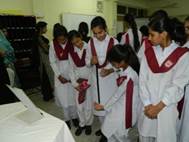 KSS's first stall featured a demonstration of eddy currents and the second housed a seismometer. This stall was hosted by Mr. Ahmed Waqas Zubairi. Students as well as their teachers found them quite exciting. Students were surprised to see magnets falling through metal tubes at "snail's pace" - the opposition to free fall is caused by eddy currents in the metal tube. Zubairi explained the occurrence of earthquakes in different parts of the world, especially in Pakistan, and also demonstrated the recording mechanism for earthquakes through a real seismometer. Students were allowed to jump on a plan associated with the seismometer, thus producing "artificial earthquakes".
KSS's first stall featured a demonstration of eddy currents and the second housed a seismometer. This stall was hosted by Mr. Ahmed Waqas Zubairi. Students as well as their teachers found them quite exciting. Students were surprised to see magnets falling through metal tubes at "snail's pace" - the opposition to free fall is caused by eddy currents in the metal tube. Zubairi explained the occurrence of earthquakes in different parts of the world, especially in Pakistan, and also demonstrated the recording mechanism for earthquakes through a real seismometer. Students were allowed to jump on a plan associated with the seismometer, thus producing "artificial earthquakes".
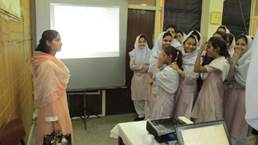
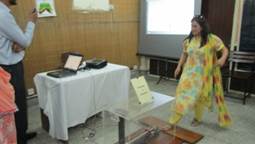
Ms. Maham Masood Sadiq hosted the stall on the measurement of different weather components with the help of home-made, easy-to-replicate experiments. Through different experiments she showed how weather varies in different parts of the world. She revealed how rainfall, air pressure and air speed are measured in weather stations. Small scale models of these gadgets were built and appealed to the visitors.
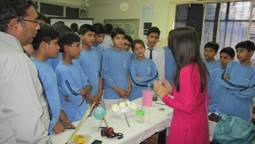
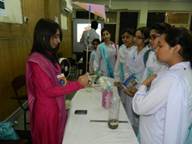
The astronomy and cosmology setup was hosted by Mr. Kumail Abbas. The students took keen interest in gaining information regarding our spatial and temporal whereabouts in the universe which were explained through relevant pictures and animations. He also showed illustrative simulations on the phases of the moon. Lunar craters were exhibited through a simply designed experiment containing a sand box and spherical bobs of different masses, impacting from various heights and from differing incidence angles
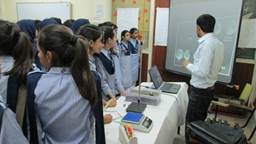
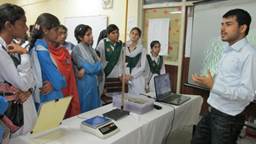
Ms. Arifa Mirza, a teacher at the Punjab University, introduced the nature of light, by relating light and color to the structure of atoms. She showed the spectrum from a mercury bulb and explained the spectrum acquired with a spectrometer. Starting from the atomic structure she explained the formation of the spectrum of mercury light. She also explained how different things have different colors. Her demonstration thrilled the teachers and students and helped the secondary level students in obtaining a better understanding of the meaning of visible light spectrum.
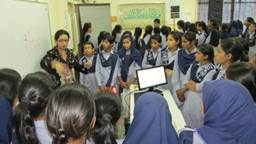
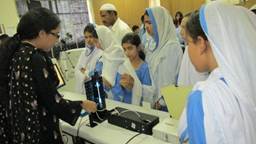
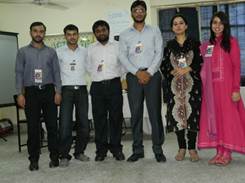
In short, it was another fine evening showing the unwavering commitment of both the Ali Institute and the Khwarizmi Science Society for the promotion of science knowledge in our young minds, as we believe this holds the key for our national survival and progress.
-------------------------------------------------------------------------------------

